Meticulous movable cultural relics census of Potala Palace
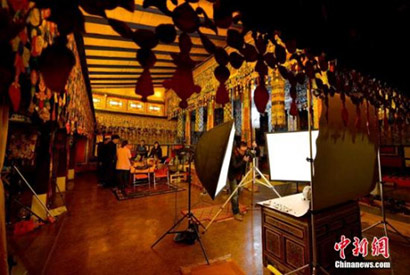
The work site of the census group in the hall of Potala Palace on Apr. 12.
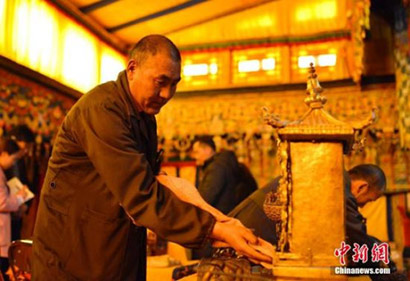
A lama by the name of Ngawang Thokme was cleaning a niche for a statue of the Buddha to be appraised in the West Chamber of Sunshine of Potala Palace on Apr. 12.
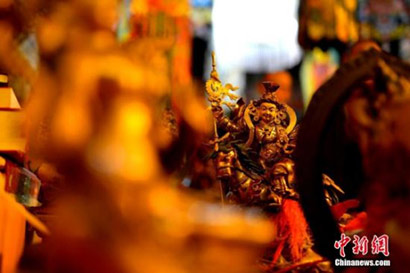
The cultural relics to be appraised in the West Chamber of Sunshine of Potala Palace on Apr. 12.
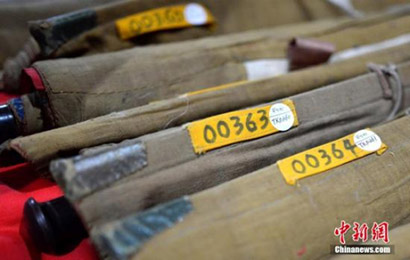
The appraised Thangka paintings to be shot on Apr. 12.
Palbar Khyungdar, head of the silk fabrics census and filing group of Potala Palace, was observing the texture and pattern of Chalu, a kind of personal effects of lamas, with a microscope special for cultural relics appraisal. “We should be meticulous enough to observe even the tissue of each thread in the work of cultural relics census and filing,” he said.
Towering on the Maburi Mountain (Red Mountain) in the center of Lhasa, Tibet, Potala Palace is known as the “treasure house of Tibetan history, culture and art”, with a history of over 1,300 years. With a rich collection of cultural relics and rare treasures, it is one among the first group of cultural heritage sites under key state protection of China.
Sonam Wangden, deputy head and researcher of the management office of Potala Palace said, “Potala Palace has a rich collection of cultural relics, including over 100,000 ancient books and documents of various kinds. In the 1990s, our cultural relics filing work had a weak foundation, only making a catalogue and recording the names of the cultural relics. There was no complete and standard detailed file, making it hard to carry out cultural relics census and research work.”
At the end of 2013, according to the requirements of the Central Government on census, registration and filing of all movable cultural relics, Tibet launched this work to get detailed information of the movable cultural relics in the region.
“The cultural relics filing work covers 14 procedures such as recording the name, age, source, complete degree, appearance and size, and taking photos and numbering the cultural relics according to their categories,” Sonam Wangden told China News.
Tashi Tsering is a photographer of the Thangka census and filing group. He said taking photos of the cultural relics is the last procedure of the filing work. At least seven photos should be taken for each Thangka painting about two meters high and then filed.
“Finally, there will also be professionals explaining and recording the rich content of each Thangka painting. In order to reduce the appreciation of Thangka cultural relics, professionals will explain their contents according to the photos,” Sonam Wangden stated.
Palbar Tsering is in charge of the lamps and incenses in the West Chamber of Sunshine of Potala Palace. He has worked there for 20 years. In the past, the statues of the Buddha, porcelains, religious instruments and other cultural relics were stored before being classified in details. “In case of handover, it is hard to check the information of cultural relics, not conducive to the protection and utilization of these cultural relics,” said he. The census work made him rest assured.
Sonam Wangden said, “So far, Potala Palace has completed the filing work for over 17,000 articles of cultural relics. Due to lack in professionals, the work proceeds slowly. We endeavor to complete the census and filing work for 20,000 articles of cultural relics in Potala Palace this year.”
Your Comment
Name E-mailRelated News
More >>-
;
-
-

-
Potala Palace to resume peak season ticket price
The Potala Palace management office has announced that starting from May 1, peak season ticket pricing will be in effect.
-
-
-

-
Tibetan Buddhist believers walk around Potala Pala
Tibetan Buddhist believers walk around the Potala Palace for praying in Lhasa, southwest China's Tibet Autonomous Region, March 14, 2016.
-
-
-
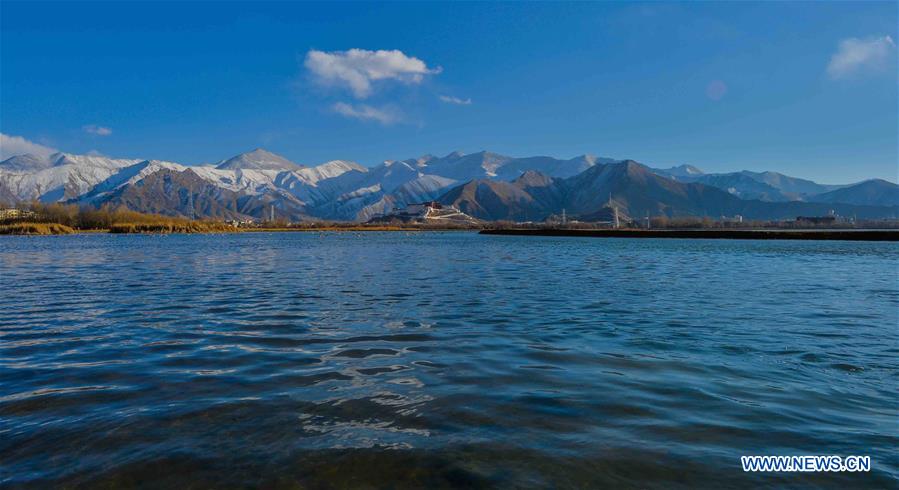
-
Potala Palace in snow
Photo taken on Feb. 9, 2016 shows the Potala Palace after a light snowfall in Lhasa, capital of southwest China's Tibet Autonomous Region. The Tibetan New Year began on Tuesday.
-

